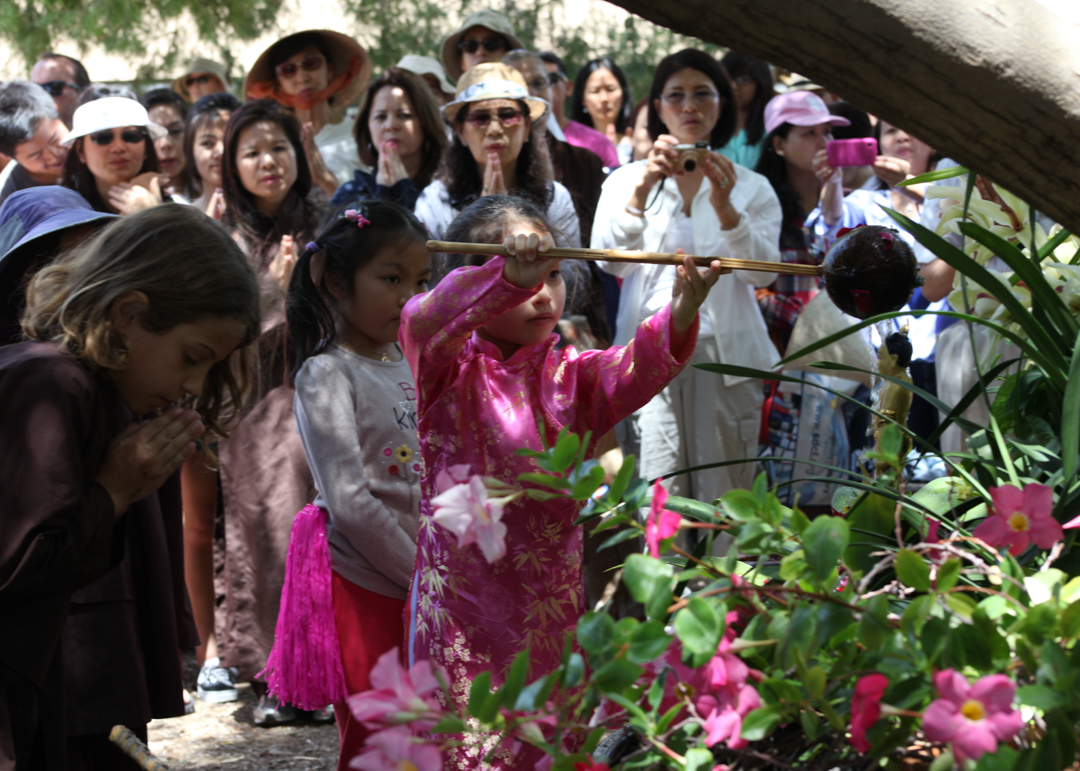Being in Touch with the Other Possibilities of Living
By Brother Phap An
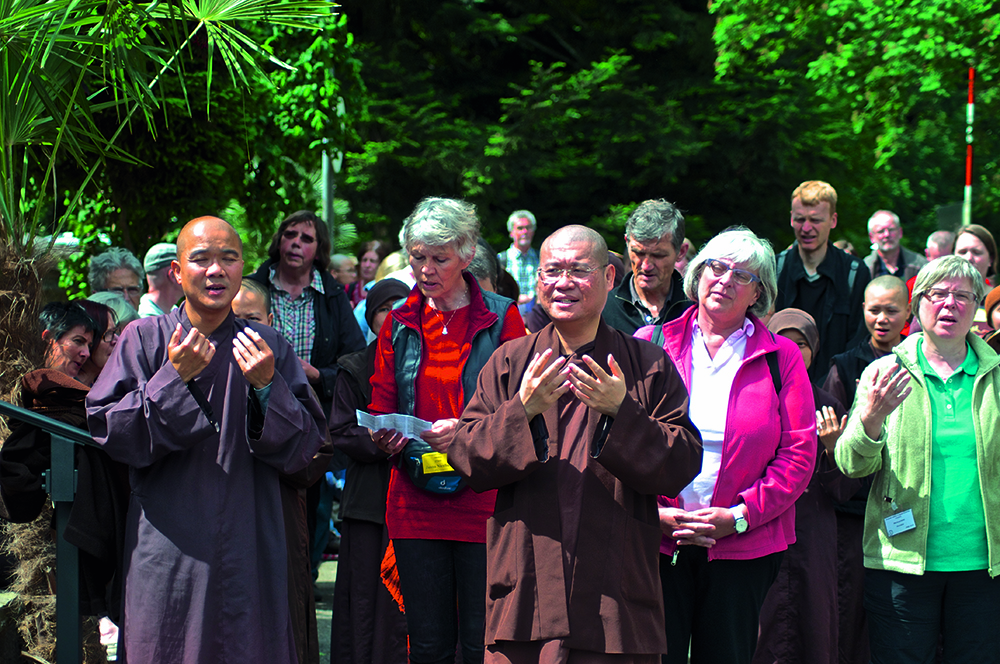
Friends visiting the EIAB sometimes ask me what exactly Applied Buddhism is and how it is different from other forms of Buddhism. I enjoy this inquiry very much and would like to share briefly with you some of my thoughts on this topic.
Being in Touch with the Other Possibilities of Living
By Brother Phap An

Friends visiting the EIAB sometimes ask me what exactly Applied Buddhism is and how it is different from other forms of Buddhism. I enjoy this inquiry very much and would like to share briefly with you some of my thoughts on this topic.
There are many different aspects of Buddhism. We can look at Buddhism through many lenses, such as through the lens of a religious historian, of a philosopher, of an anthropologist, of a believer, or of a simple spiritual practitioner who uses Buddhism as guidance for a happy and healthy life, and so on.
Let us look briefly into some of these aspects and begin by asking ourselves the following questions: What constitutes a spiritual life? What are the core aspects of a spiritual life, and do we really need a religion in order to have a spiritual life? What is the relationship between religion and spiritual life? Do we need some sort of a belief system in order to live peacefully together on this planet Earth? If so, how much belief, how much faith, should we have in order to have a spiritual life? Or how much spiritual life do we need for our belief system?
If we look deeply at our past as well as the course of our humanity, our life has been constructed from different paths of belief and faith. So, in some way, we are all religious practitioners in some particular ways. We have constructed our life based on these beliefs. Our life is a result of our own belief system.
Some beliefs have led us to joy and happiness, and some have led us astray into confusion, suffering, and destruction. If we have a chance to stop and look at our life deeply, with honesty and sincerity, looking at the nature of the beliefs and the faiths that we have chosen, we begin to have a spiritual life. To have a spiritual life is to walk on the path of discovery. We learn to discover ourselves, to discover others, as well as to discover the totality of life, of our environment, and of our whole cosmos.
A SPIRITUAL JOURNEY OF AWAKENING
In the fifth century BCE, when Prince Siddhartha left home and did that important act of stopping and looking deeply into his own life experiences, he began his spiritual journey. According to the legend, he was searching for six years. Then he found a particular spiritual path. He became a Buddha. “Buddha” means the one who has awakened, that is, has reached or attained enlightenment.
What makes somebody a Buddha? What qualities or states of mind or ways of living make someone a Buddha? There have been many discussions. But everyone has agreed that the Buddha taught a doctrine of no-self (1) or a practice of non-self. (2) No-self is the foundation for understanding and developing Theoretical Buddhism, and non-self is the foundation for acting, practicing, and living Applied Buddhism.
Theoretically, the Buddha taught us that we do not have a permanent, non-changing, eternal identity called a self underneath our unique personality as a human being. If we observe ourselves carefully, we will see that deep within us, there is no single isolated reality that could be called our true self. In our daily life we say: this is my body; he is my son; that is my house. These are convenient ways to communicate. So they are valid as far as the conventional way to designate is concerned. Unfortunately, these ways of living and communication gradually lead us to assume unconsciously that there is a fixed entity called “me.” We don’t know exactly what it is, but there seems to be a “me” deep within each one of us, and that “me” seems to be permanent. We believe that there is a fixed entity in every one of us that makes us who we are. “Do you know John?” “Yes, I know him very well.” Right away you recall how John talks, how John thinks, how John behaves. And what John says, what John thinks, what John does, that constitutes a man called John. John becomes a fixed, permanent entity within our unconscious perception. But life is a process of change. This tendency of fixation, of reification, prevents us from being deeply in touch with life, which is available only in the present moment. If we believe deeply in this notion of a permanent self, we cause ourselves deep suffering when things do not follow our wishes.
THE “SELF” AS LINGUISTIC CONSTRUCTION
Believing in a permanent reality inside and outside of us and searching for its existence has long been a quest of humanity, since the very dawn of our consciousness. This quest was also present in the historical context of the Buddha’s time. The discussion has been going on inside and outside of the Buddhist tradition for thousands of years. Buddhist philosophers observe that as humans, we are blessed with linguistic capabilities. By logical deduction, they discovered that the notion of a permanent “self ” is only a linguistic construction deeply embedded in our subconsciousness due to our usage of language. Even though this process of “self-reification,” of regarding and treating this construction as if it has a material existence, is a necessary means for our mental functioning as a human, the nature of life is emptiness. There is nothing permanent and unchangeable underneath anything, either within us or outside of us.
THIS IS BECAUSE THAT IS
The Buddha declared the principle of “this is because that is” as a governing principle of life and nature. Nothing can ever be found that can exist independently by itself. This principle holds true from the level of subatomic particles all the way to the level of the whole cosmos. All of the phenomena at the subatomic particle level can be qualitatively described by this principle, and so can the movement of the other planets, the Milky Way, the galaxies, and all animate and inanimate forms of life. Everything is interrelated. Every thing depends on all other things for its existence.
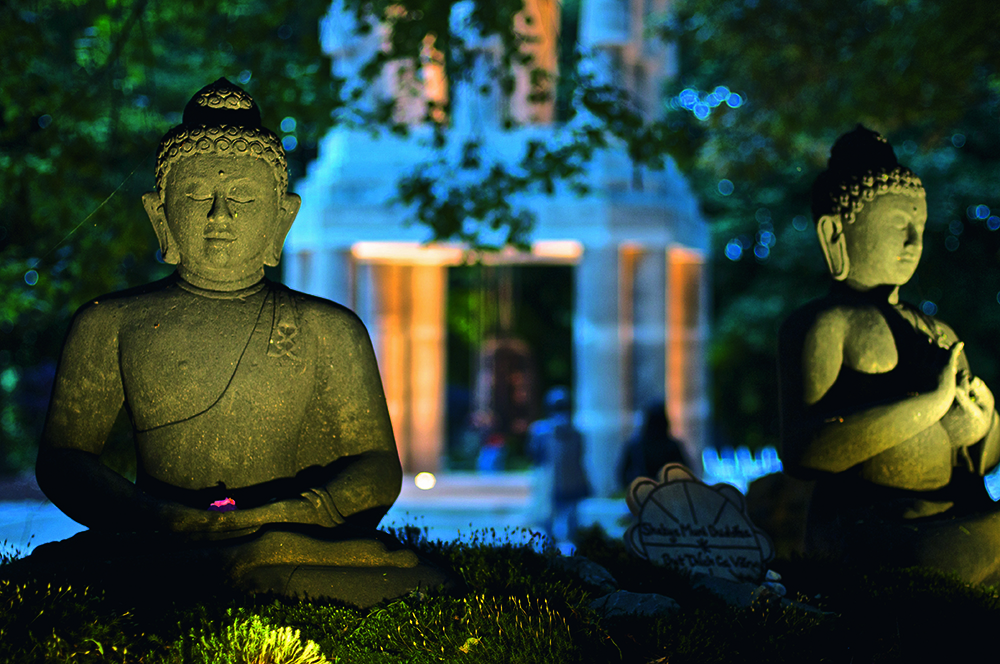
Thanks to his sensitivity, the Buddha was awakened to the vanity of life. Life ceased to have meaning altogether. This spiritual wake-up gave him the impulse for a first spiritual jump, that of leaving home for a spiritual journey. This disillusionment and dissatisfaction with life is a necessary condition for anyone who is serious about seeking the meaning of life. Naturally, facing this condition, we all want to look for something that will be forever satisfactory, forever lasting and permanent.
We can say that throughout the six years of his spiritual journey, the Buddha-to-be made many important discoveries about himself and about the nature of life. These discoveries constitute moments of spiritual awakening. Each awakening gave him the momentum to live according to the insights he had found. Throughout six years of patiently searching within himself and contemplating the nature of our world, he had a breakthrough into the illusionary nature of our phenomenal world.
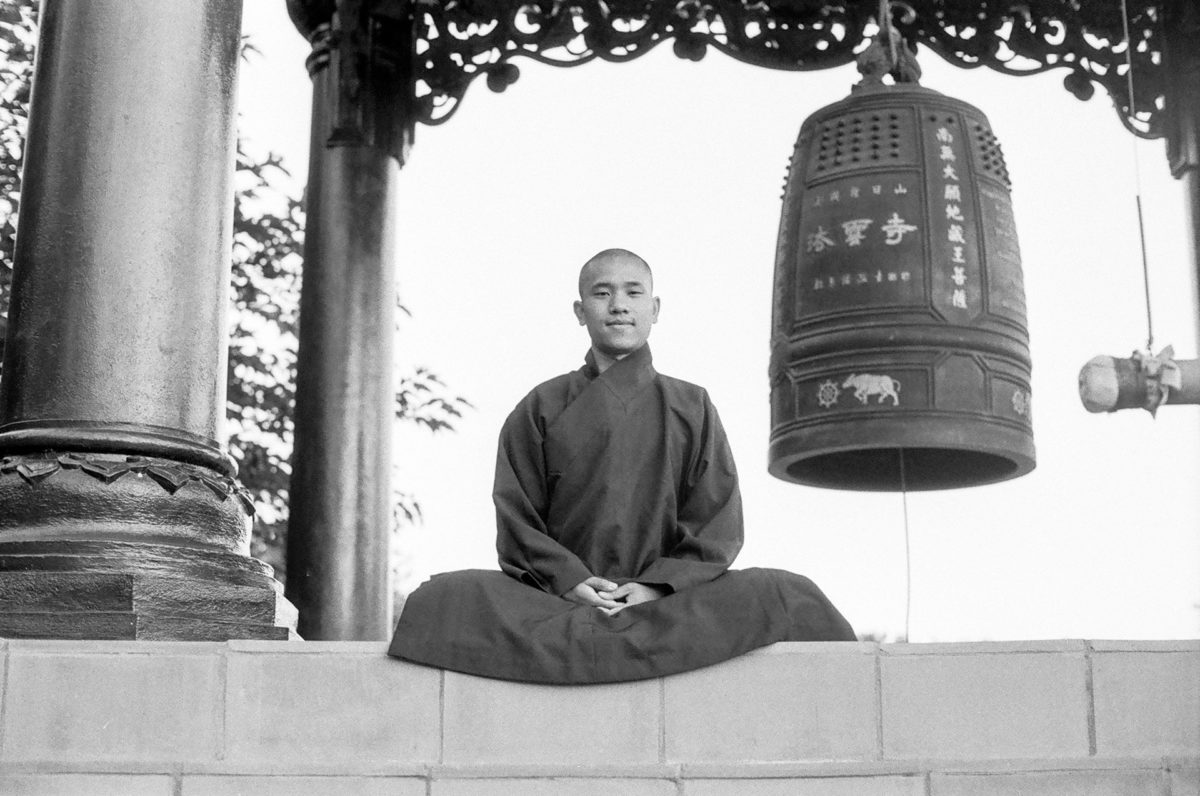
THE MIND IS AT THE ROOT OF OUR SUFFERING
It is not the nature of life itself that causes us difficulty. The root of our afflictions lies in the way we understand the transitory aspect of life and our failure to recognize and truly accept its true nature. It is our mind and the model through which we perceive our observed world that causes us difficulty. The Buddha discovered that our mind is the creator of the illusionary world, which we believe to be solid, everlasting, and permanent. The mind is the mischievous master, the architect of all of our suffering and difficulty. It is the process of “self-reification” that makes our mind rigid and inflexible and prevents us from flowing along with the changing world.
Our ontological search for an absolute eternal ground of existence, for something everlasting and permanent, is also a scheme of our mind. With his spiritual awakening, the Buddha discovered the way to live happily. The way out of all confusions woven by our mind is to perform a final spiritual jump to transform the habitual energy of our builder, the workings of our mind. Spiritual life is a life of watching out for the movement of our mind—and transforming its craftwork.
Thus, through direct observation and deep contemplation, the Buddha discovered the movement of the mind and the world of happiness or pain it creates. He was not deeply interested in the ontological ground of the mind as a theoretical abstraction. Rather, he applied this understanding in order to have a happy and peaceful life. He had discovered the epistemological way to liberate himself from his own suffering, his pains and his sorrows. He had discovered a particular truth, the truth of the unsatisfactory nature of life, the root of its unsatisfactory nature, and the possibility for joy and happiness by adapting our life accordingly to the principle of ever-changing life.
TRUST IN EXPERIENCE AND CHANGE
Based on awakening himself to the fact of no-self at the applied level, the Buddha taught us the practice of non-self. The Buddha declared that our dissatisfaction with life is caused by the habit energy of fixing our lives to the abstraction of a “self.” There is an unconscious illusion that there is a “me,” and we try to do everything to satisfy this “me” so that we can be happy.
We consider this “me” to be permanent, solid, and unchangeable. Sometimes in our daily relationships, we feel so much frustration and pronounce desperately: “Do not bother; he/she will never change!” “Don’t waste your time talking to him/her.” But if you ask for advice from the Buddha, he might tell you: “Please wait a moment. There is a possibility that he/she will change. He/she will change when the right conditions for him/her to wake up are there, so he/she can see things differently and determine to change and aspire to live in an awakened way. So please live your life in such a way that you can help to provide enough conditions for changes to happen in the other person. This possibility is there within each and every one of us.”
The Buddha certainly had faith and belief. He believed in his own discoveries and experiences. But he only accepted his faith as a means to support his spiritual life as far as it concretely helped him to free himself and others from different dissatisfactions of life. The Buddha applied the practice of non-self to all aspects of his life and experiences, including his internal bodily, energetic, emotional, and perceptual experiences and his interactions with others in his surroundings. He learned to be consciously present with these experiences as much as possible and to embrace them with his understanding of their roots and his loving compassion. He recognized them as they were, while neither interpreting them based on his past experiences nor grasping or rejecting them. He did not allow his consciousness to get him confused between the experienced and its abstraction and reification. He could avoid the entanglement in his experiences that would be caused by this process of “self-reification.” So to a great extent, he was able to maintain freedom of mind in the midst of his lived experiences.
In the domain of living spiritual practice, the Buddha helped us to see that enlightenment is not a permanent, everlasting experience or an attainable state, because living experiences are continuously changing. Rather, enlightenment is an epistemological act of being enlightened, that is, an act of being fully conscious of what is experienced in the moment. With daily training, we will have enough strength to be free from entanglement in that stream of experience. This act of being enlightened is the core practice of non-self, a training of not fixing oneself to a particular process and having enough freedom to be in touch with the other possibilities offered to us in the present moment. We live deeply in the present moment, fully recognizing the present consequences due to past conditions and anticipating the future outcome, but we are not caught either in the past or in the future. This is the core aspect of a spiritual life and this is what I call “personal Applied Buddhism.”
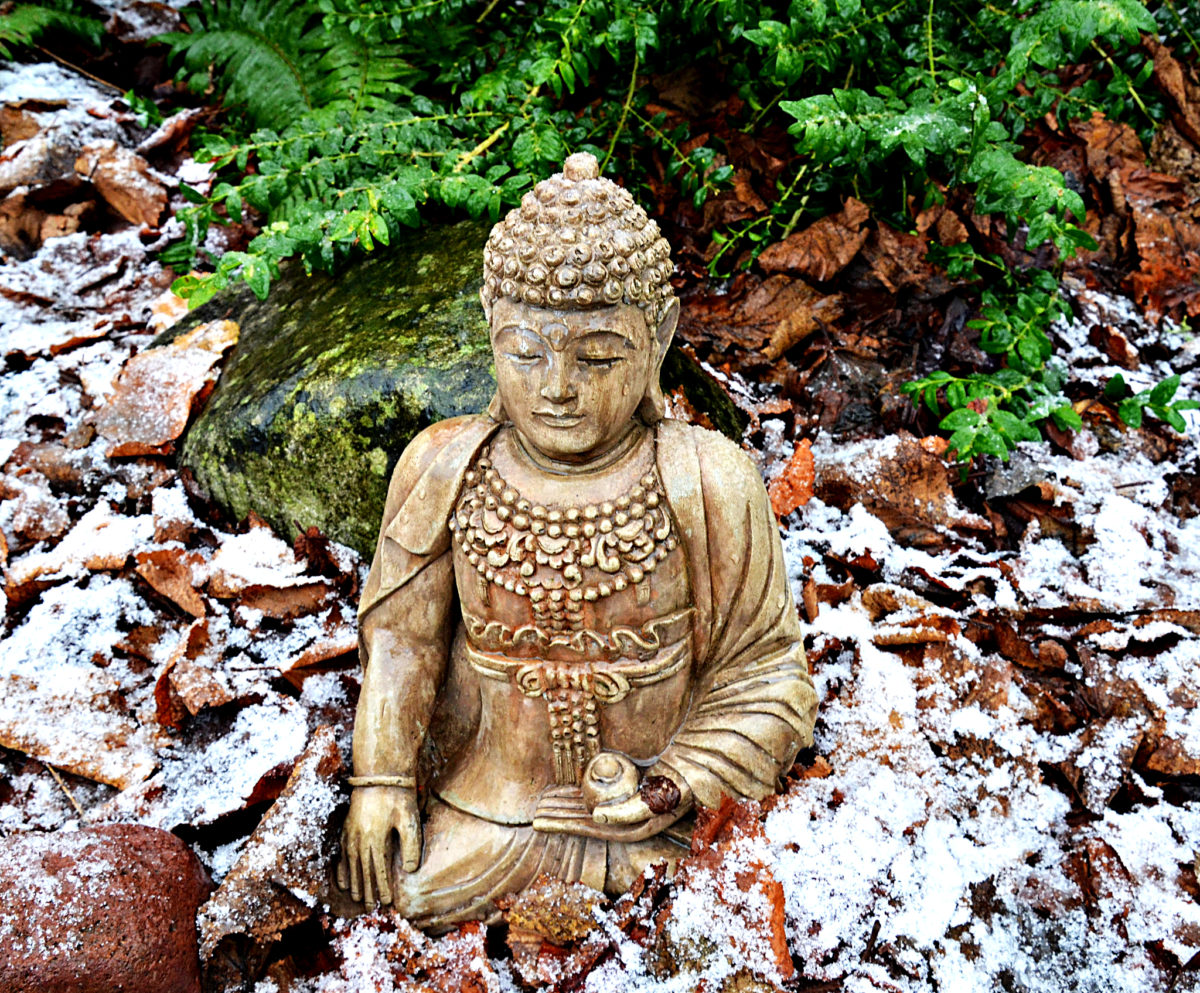
Learning from these experiences, we can find out for ourselves our own spiritual path and form our own religious belief system. These beliefs will not be based on ideas about life but instead based on our true experiences of living a life of freedom and joy, being free of our own pains and sorrows. This is the foundation for our contribution to a peaceful world.
THE CAPACITY TO BE FREE
We all have this capacity to be free, to reach the pure mind, the Buddha mind, when we free ourselves from the tendency to create such mental loops of abstraction, a process of “self-formation.” When we practice non-self, we learn to act as a mirror, fully reflecting. We learn to restrain ourselves from reacting quickly and aggressively or behaving negatively.
The practice is very simple, but we need to train ourselves diligently. For example, when something happens that causes us painful emotions, instead of reacting immediately, we can practice as follows: “Feeling the pain within me, I breathe in. Embracing the pain within me, I breathe out. Feeling the pain within me, I breathe in. Feeling so much love for myself, I breathe out.” We allow ourselves to experience and give ourselves enough space to embrace our experiences. We learn to come back and take good care of our pain and sorrow. The more we can do this, the more we can go to our fundamental ground and touch the Buddha within us. Creating loops of thinking and abstraction adds only more pain and supplies more energy and momentum to the wound within us.
The Buddha did not remain in the forest for long but instead went back and reintegrated himself into his society and environment in order to help others. To have a spiritual life is to learn to take care not only of our own life but also of others’ lives. This is the other important aspect of practicing non-self: stepping out of ourselves in order to be in touch with and be a part of the other possibilities of living. To have a spiritual life is to have a life together with someone else, with the totality of life and not just the fragmented, broken pieces of life. That is the true meaning of a spiritual life. We have to learn to give ourselves completely to life as a service and to learn to receive whatever life offers to us as a blessing.
ENCOUNTERING LIFE AS PART OF OUR SPIRITUAL PRACTICE
This process of being together, learning to understand one another’s needs, one another’s joy and happiness as well as one another’s pain and suffering, so that we can accept, love, and take care of each other, is a part of spiritual practice. What is the point of living if we go to the mountain and stay there for many years, escaping human contact? Many people consider that a spiritual life. But that is not really a spiritual life. That is an escape. It could be called a spiritual escape because you cannot face life. You have to go and be quiet somewhere; you hide yourself somewhere because life is not meaningful anymore. To bring meaning back to your life is part of the spiritual training.
Life becomes meaningful again when we can relate more deeply to people and every thing around us, whether that is a tree, an animal, a bird, a friend or even a casual acquaintance. We have to be in touch with everything wholeheartedly. Working together, living together, is a very difficult process. Some people think that spiritual life is only for the monks and the nuns. In fact, lay friends need spiritual life more than the monastics do, because they have a family and long-term commitments to their family members.
1 No-self is a noun, which denotes an ontological existence.
2 Non-self is a verb, which denotes the epistemological action of overcoming the tendency of fixation of our mind.
Thay Phap An is the director and Dean of Education of the EIAB. He was ordained in 1992 and still continues to learn and grow, offering new Dharma doors combining Chi Kung (Qigong), Tai Chi, and meditation, among many others.
This article is reprinted from the EIAB Newsletter, August 2014. Because of limited space, we refer the interested reader to the full version of this article at: http://eiab.eu/inspiration/appliedbuddhism-the-practice-of-non-self.

